When it comes to cartoons, what defines the difference between a boy and a girl if the character is an animal? Moreover, is there a need to clearly define the character’s gender anyway? Apparently, the studio executives behind the most popular cartoons think that it’s crucial, but the portrayal of female animal characters in cartoons is giving some people a serious headache.
Just a few years ago, there were even articles on popular news and entertainment outlets suggesting lists of drawn female characters that “sparked” someone’s “sexual awakening”. “I feel like I’m not the only one who would have this as their cartoon crush,” one person wrote while talking about Jessica Rabbit.
Apparently, when it comes to the question, people are divided into two groups: one group has had enough of “sexy” cartoon characters, while the other group finds nothing wrong with it. “The way I handle this is I remember it’s all fictional and I shouldn’t take it as a nature documentary,” one person wrote on Twitter. Nothing wrong with that, but when other Twitter users started posting examples of sexualized cartoon animals, it was apparent that there was a pattern.
More info: Twitter
Recently, one Twitter user pointed out a weird pattern they noticed while watching animated movies
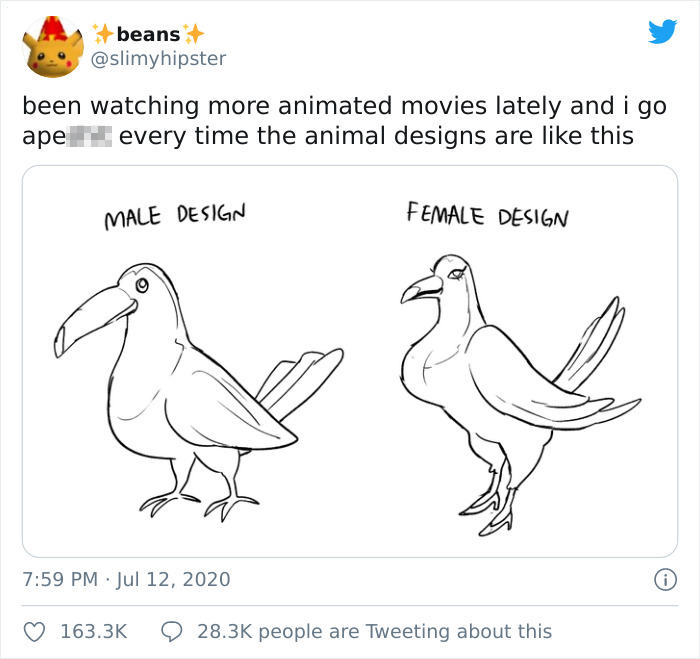
Image credits: slimyhipster
The user argued that anthropomorphized characters that are female are given exaggerated features

Image credits: slimyhipster
“Been watching more animated movies lately and I go [wild] every time the animal designs are like this,” Twitter user slimyhipster wrote upon sharing a drawn picture of a male and female design of a character. “Like okay, there’s always been criticism of fantasy species and the females always look like recolored human women versus the males that look like actual cool monster designs,” the person continues. “But this… when they’re based on *real animal species* and the differences between male and female are not like this. Argue for “stylistic choice” all you want but when the consistent design trait that is used across the board for animated female creatures is boobs and eyelashes then we have a problem.”
Soon enough, other users on the platform were quick to share the examples they witnessed themselves
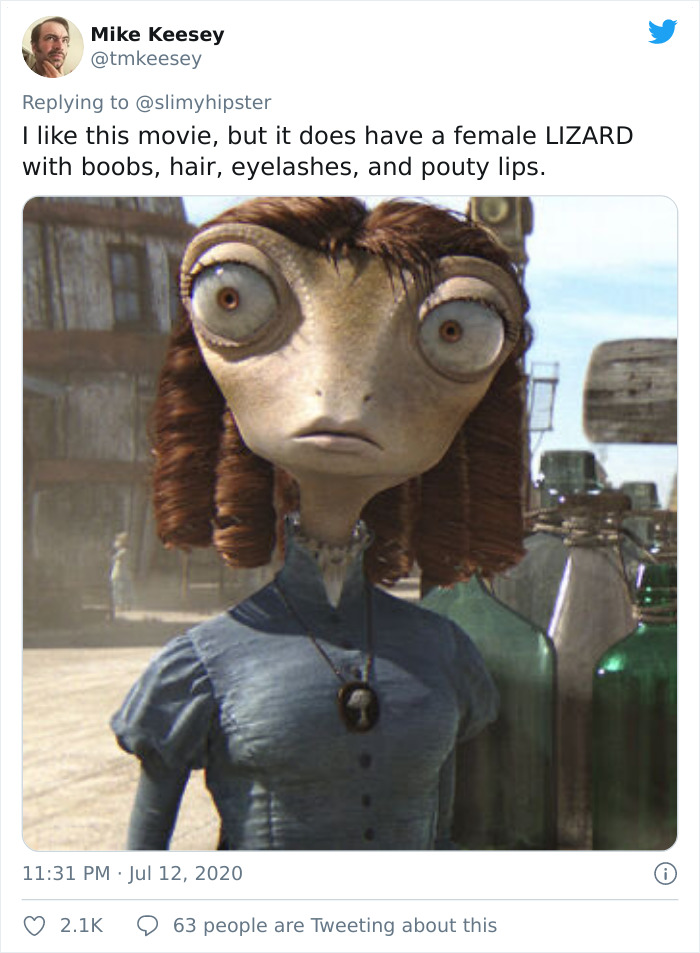
Image credits: tmkeesey
Most of the cases involved a heavily sexualized female character
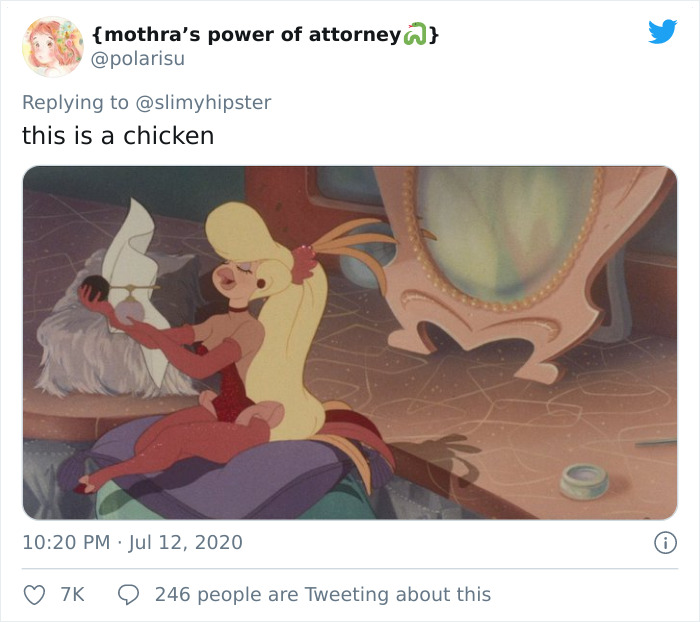
Image credits: polarisu
Someone mentioned “the sexy lady goose” from the 2004 movie “Balto III: Wings of Change”

Image credits: ufopossum
And characters from the 2020 anime “Seton Academy: Join the Pack!”
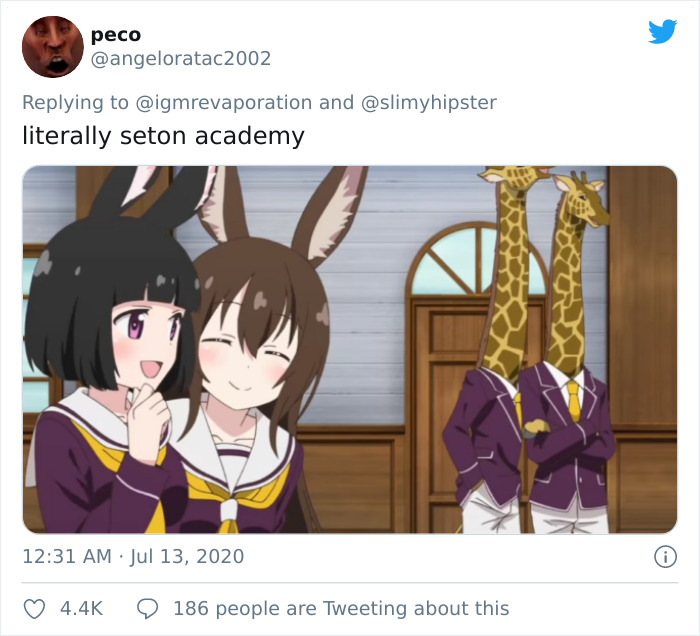
Image credits: angeloratac2002
But one of the most disturbing cases was the duck from Marvel’s 1986 movie “Howard the Duck”
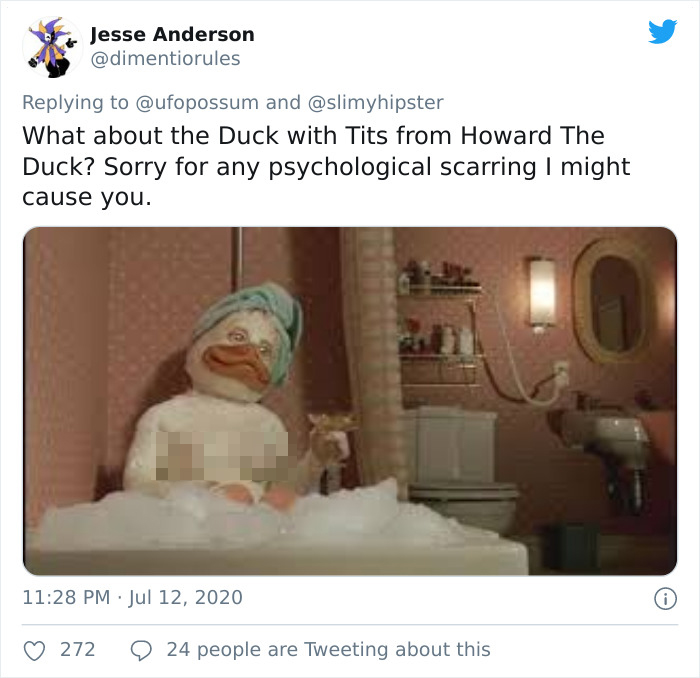
Image credits: dimentiorules
Click here for the uncensored version (at your own risk of sanity).
Someone posted two deer from Open Season (2006) as a side-by-side comparison

Image credits: worm_rights
One user mentioned the female characters in “Ice Age” (2002-2016) as well
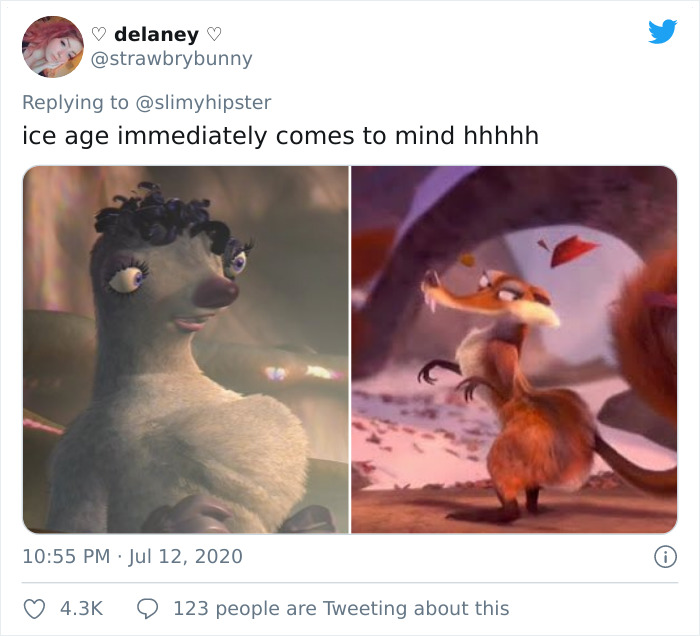
Image credits: strawbrybunny
Also, Angelina Jolie’s character in “Shark Tale” (2004)
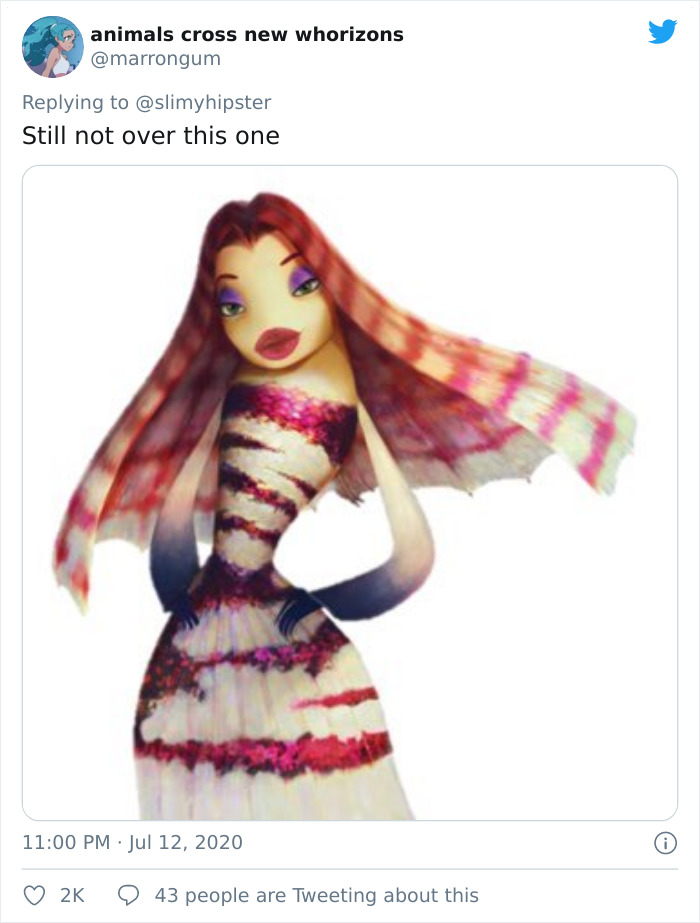
Image credits: marrongum
And many others
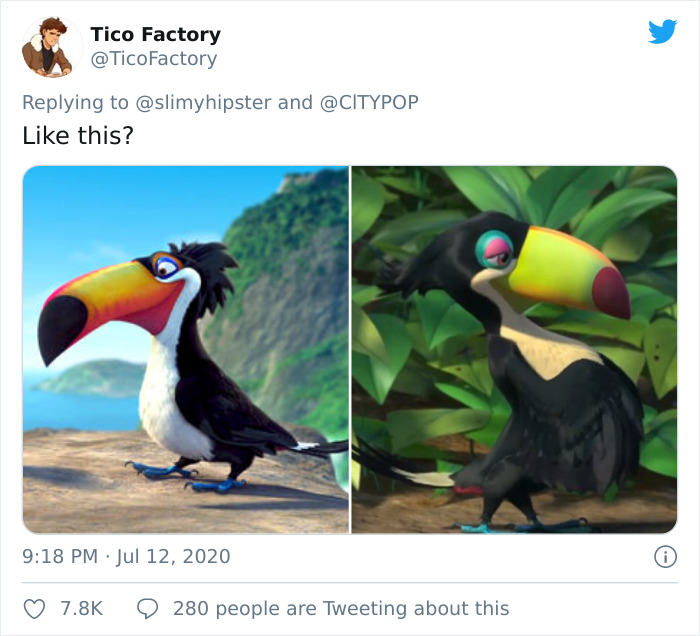
Image credits: TicoFactory
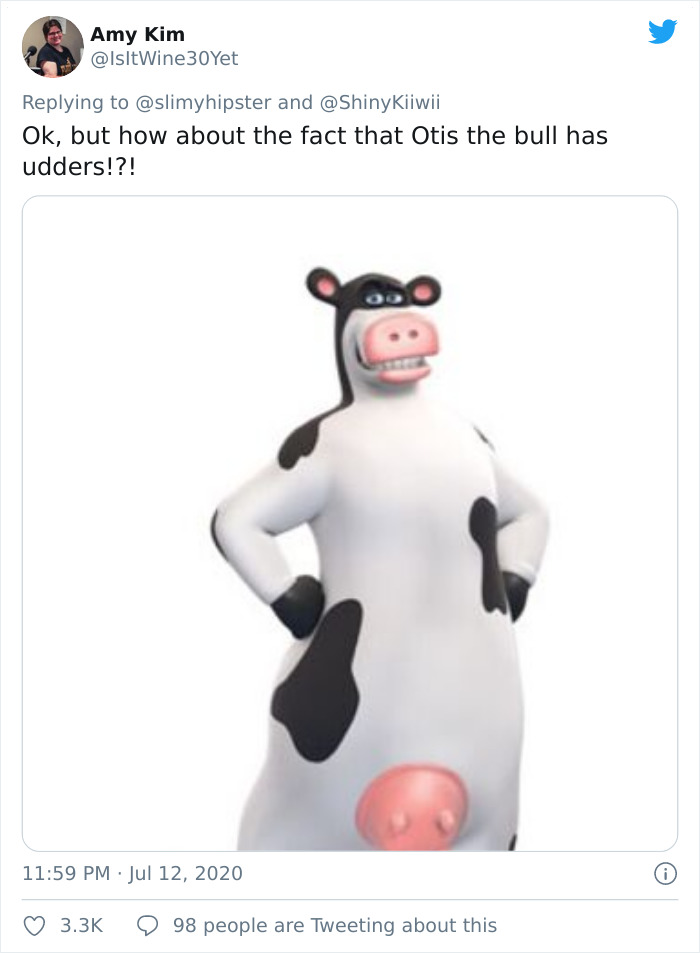
Image credits: IsItWine30Yet

Image credits: Beyond_Cake
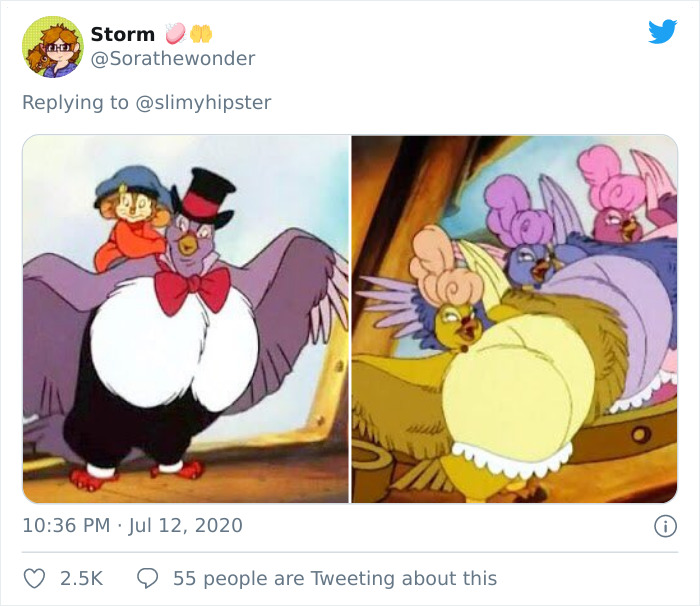
Image credits: Sorathewonder
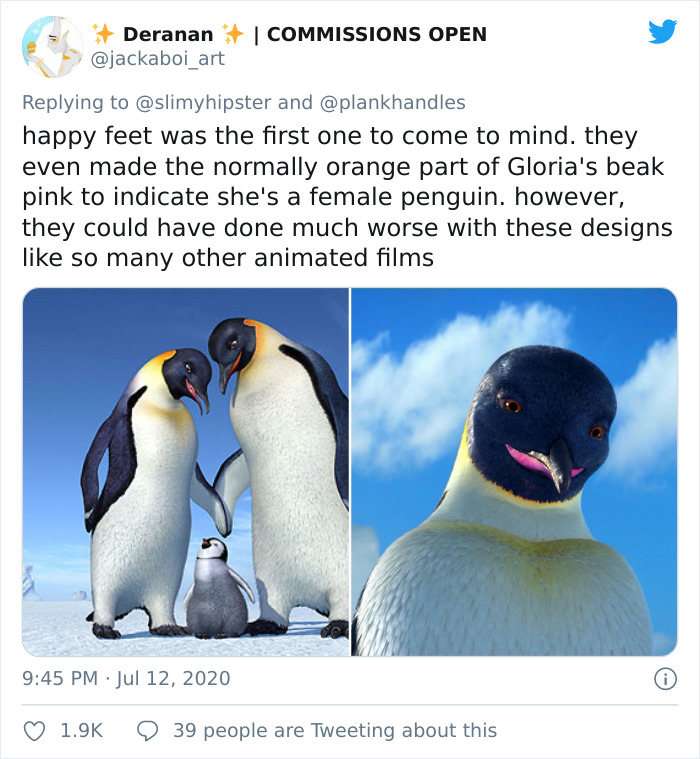
Image credits: jackaboi_art
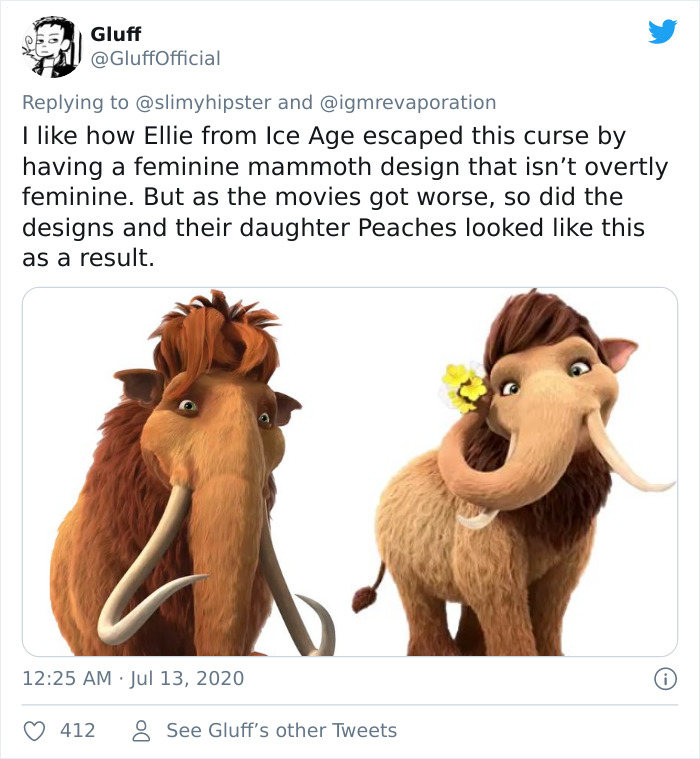
Image credits: GluffOfficial
Surprisingly, there was already some research done on the topic. Katia Perea, a Ph.D. of sociology, writes in her paper: “Disney’s pedagogy and gender coding set the stage for the princess master narrative that has come to be associated with animated women; young, thin, demure, attractive, orphaned heroines and their cute animal friends who passively await rescue from an unknown prince.”
“This image fitted into Disney’s feminine triptych, perpetuating heteronormative gender coding in the form of the princess, the witch, and the fairy godmother. To compete with the overwhelming appeal of the symphonic Disney style of sentimental and cute, rival Warner Bros. animators transformed their cartoons into a cacophony of the surreal. Whereas Disney portrayed its young women as conservative and beautiful damsels, Warner Bros. portrayed them as sexualized broads and dames,” she continued.
“These feminine characters’ gendered demarcations were shown through sexualized attributes such as breasts and curves, as well as feminine clothing, hairstyles, and long eyelashes. Although Warner Bros. women differ from Disney in their sassy attitude and overt sexual appearance, the message remains the same: women exist as the male object of desire. Disney’s damsels, like Snow White and Cinderella, reinforced domestic gender roles whereas Warner Bros.’ sarcastic and sexy dames, like Petunia Pig or Bugs Bunny in lingerie drag, reinforced women’s objectification and, at times, like the girl cat being chased by the boy skunk Pepe Le Pew, violence against women,” Katia argues in her paper published back in 2018.
However, there were some who didn’t have a problem with the animated design of females

Image credits: RoonKolos
There were people who argued that it’s better when the female is “prettier and more colorful”
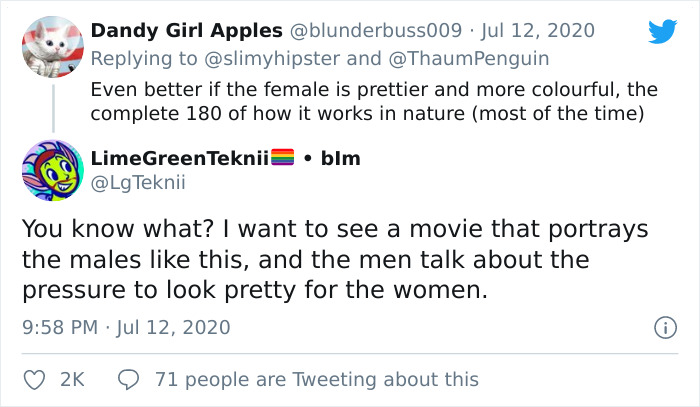
Image credits: LgTeknii
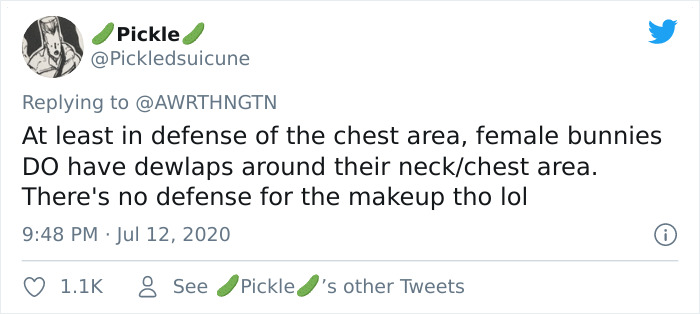
Image credits: Pickledsuicune
To illustrate the point that it’s not essential to give exaggerated features to female characters, Twitter users shared good examples seen in cartoons
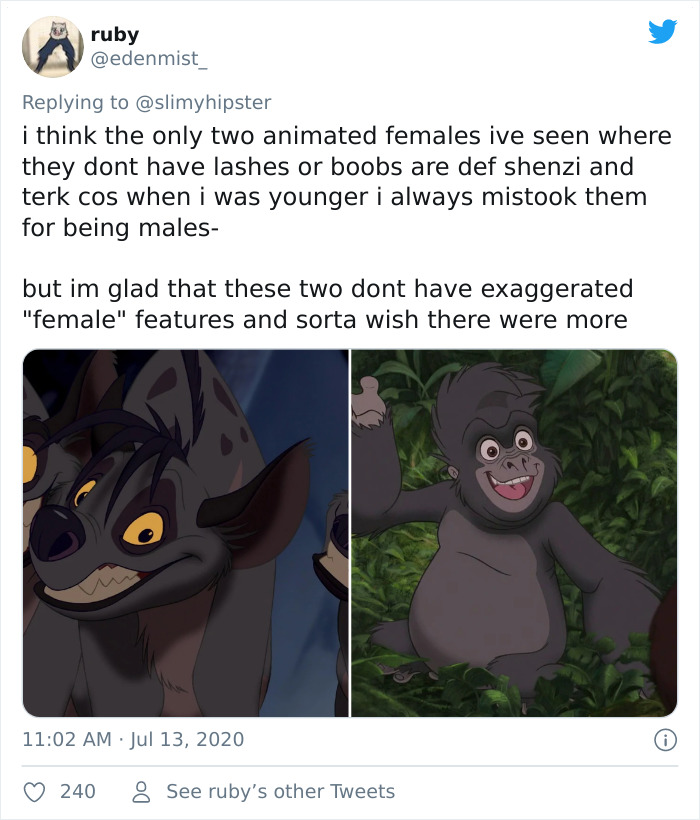
Image credits: edenmist_
Someone mentioned an animated movie from the 1970s, “The Aristocats”
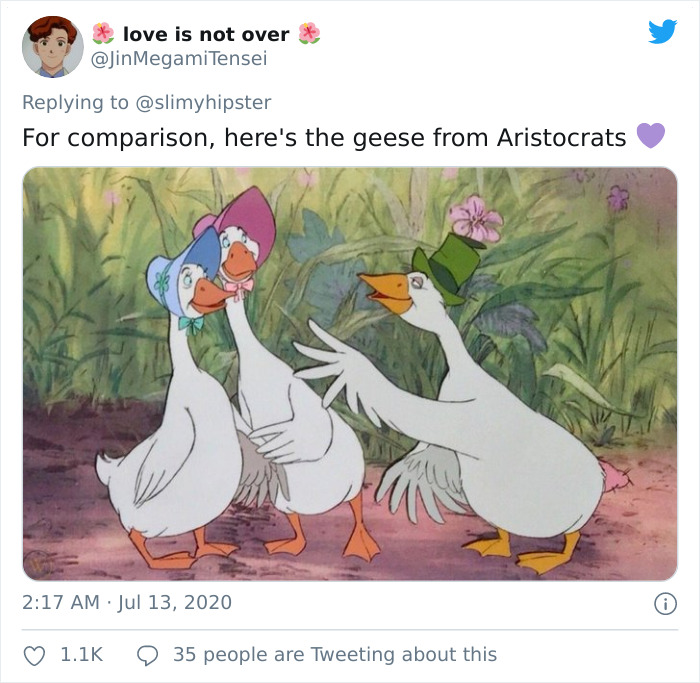
Image credits: JinMegamiTensei
And the fish parents from Finding Dory (2016)
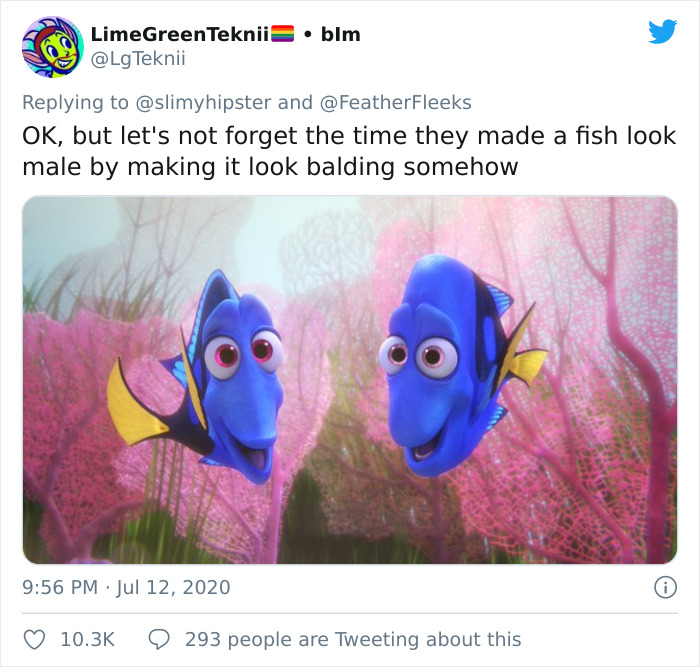
Image credits: LgTeknii

Image credits: accioharo
Kitty Softpaws’ character in “Puss in Boots” (2011)
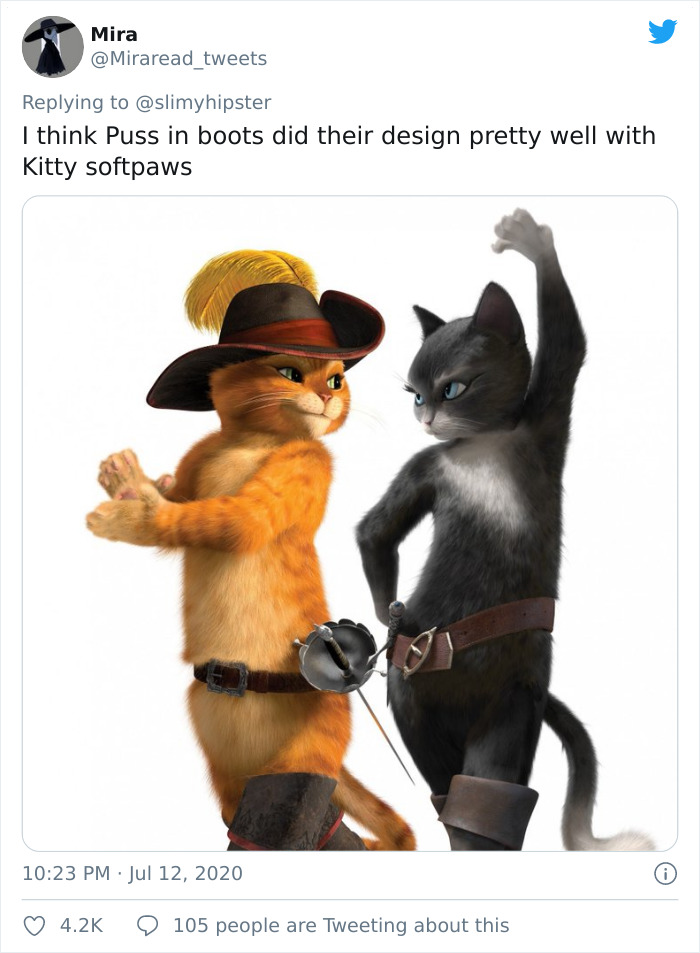
Image credits: Miraread_tweets
And two people shared Kung Fu Panda (2008) as a great example of anthropomorphized designs
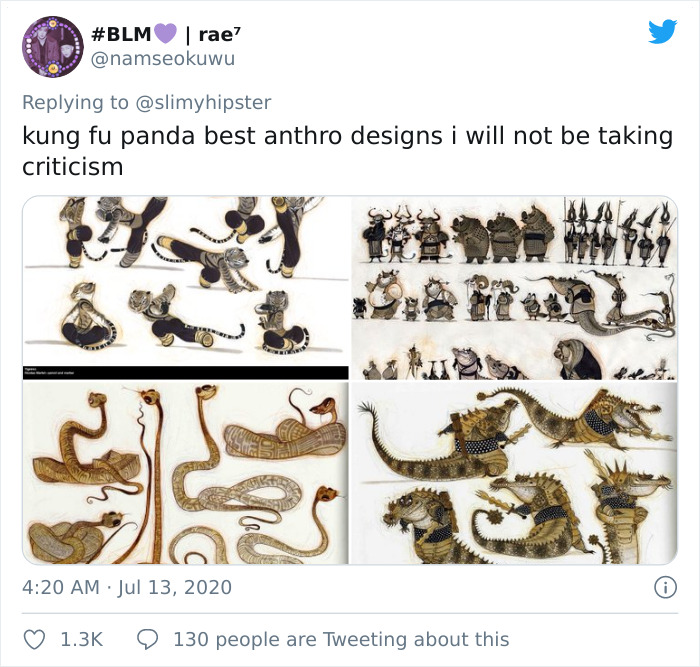
Image credits: namseokuwu
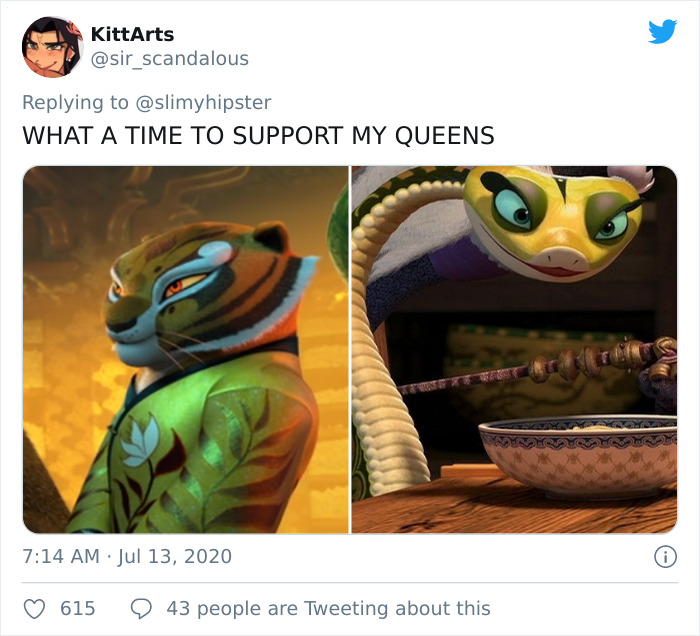
Image credits: sir_scandalous
Naturally, huge discussions like these sooner or later always retreat to jokes
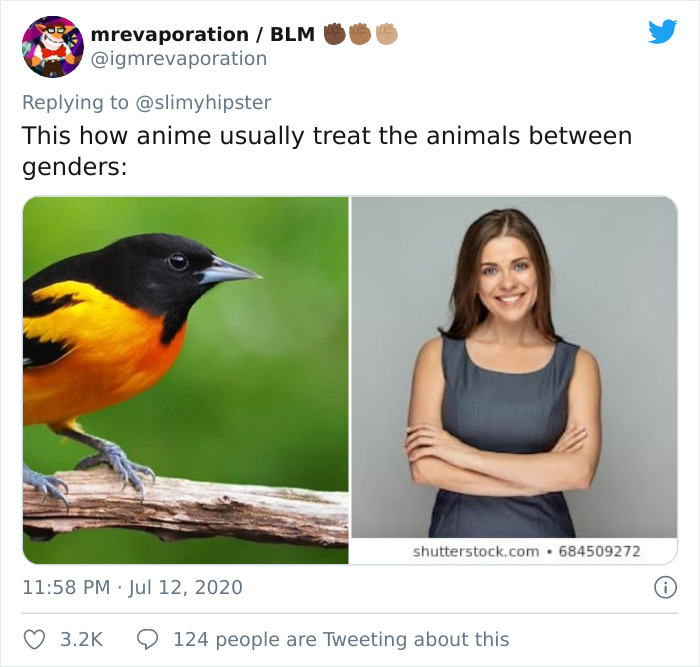
Image credits: igmrevaporation
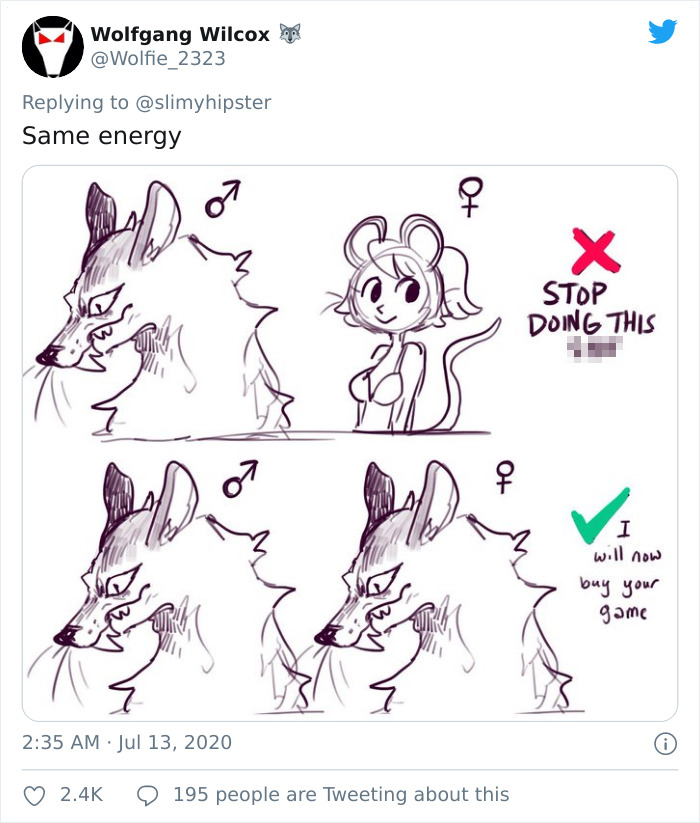
Image credits: Wolfie_2323
Which were quite spot on, actually
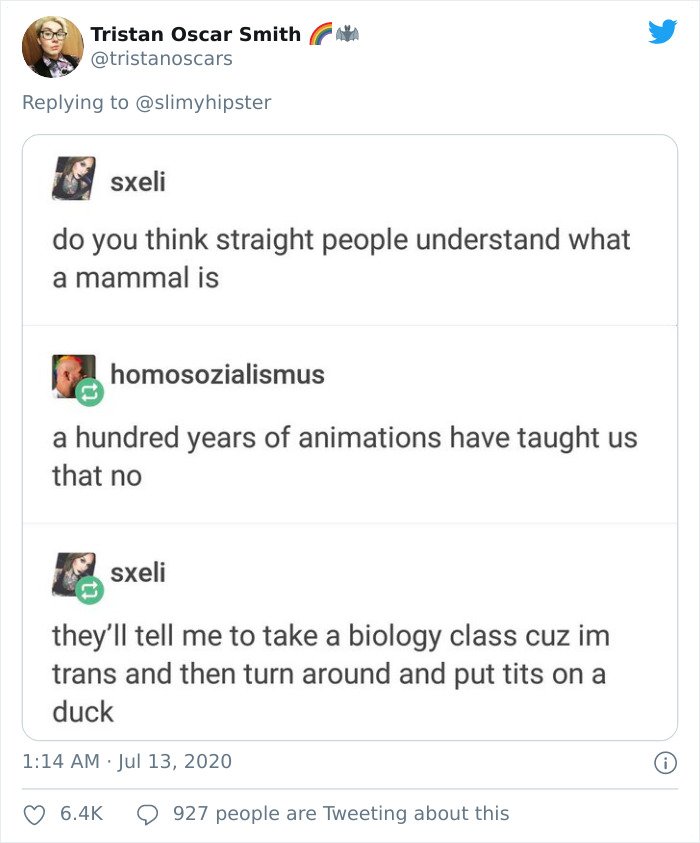
Image credits: tristanoscars

Image credits: MiloZimbenMusic
And were mocking big studio execs
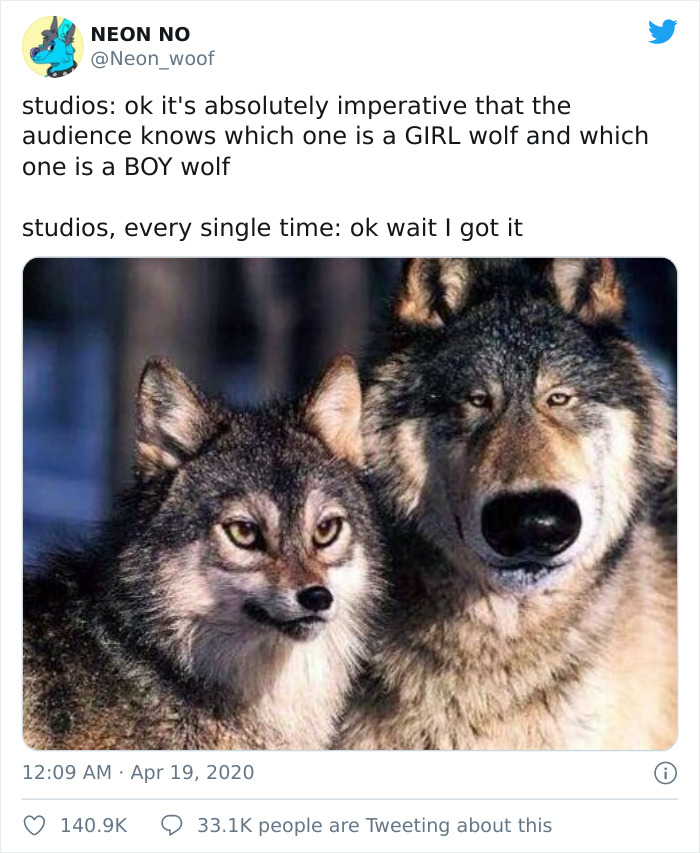
Image credits: Neon_woof
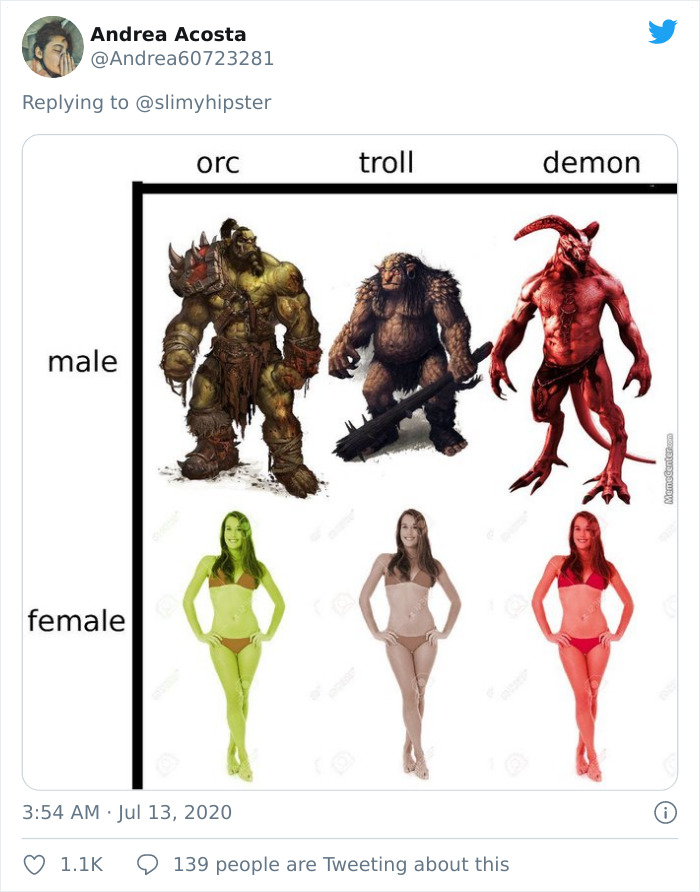
Image credits: Andrea60723281
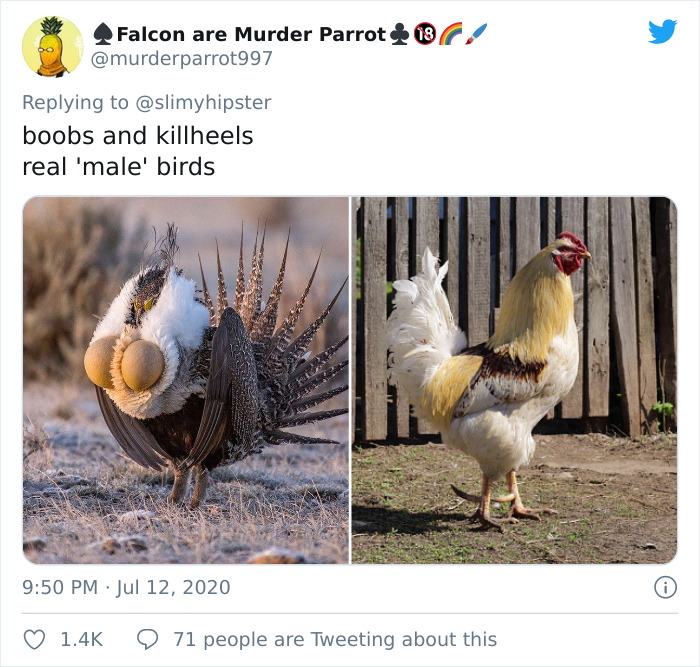
Image credits: murderparrot997
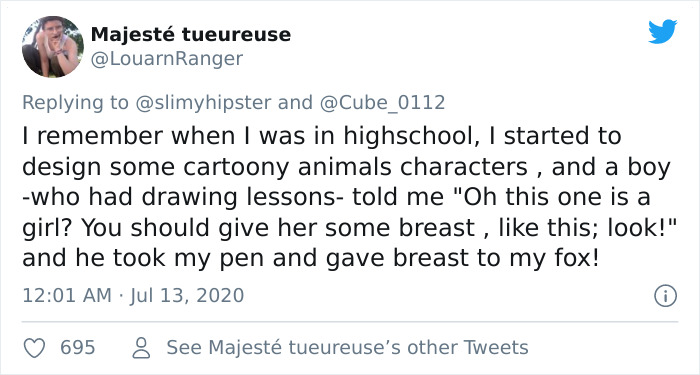
Image credits: LouarnRanger
from Bored Panda https://ift.tt/3fu1LBe

No comments:
Post a Comment